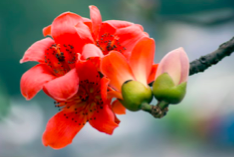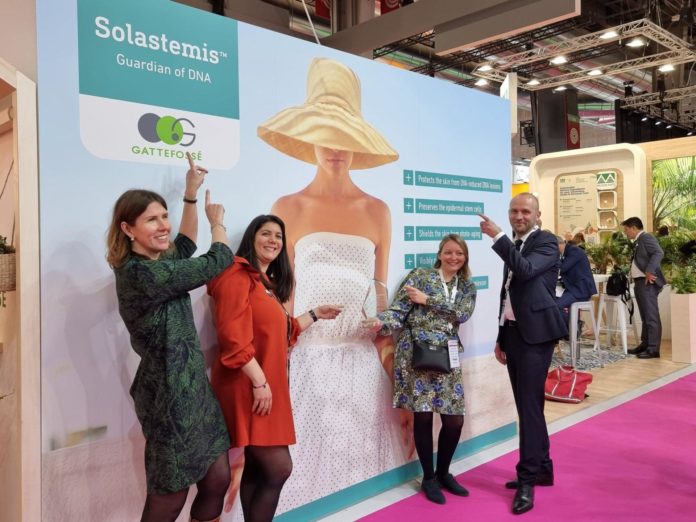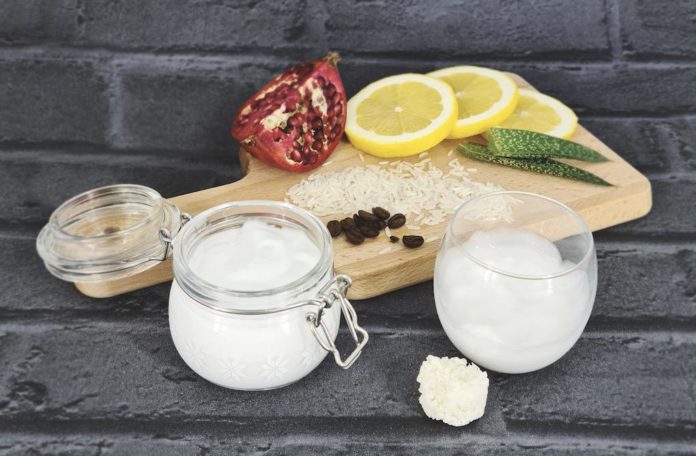SLVR'Coffee™ is the first upcycled ingredient based on coffee silverskin, the main by-product of the coffee roasting process. Efficacy studies have shown that SLVR'Coffee™ improves skin resilience by strengthening the skin barrier function, thus moisturizing and protecting the skin from irritation. Therefore, choosing upcycled SLVR'Coffee™ will comfort the skin and additionally benefit the environment.
Coffee and coffee silverskin
Coffee is consumed all over the world and provides energy, conviviality as well as comfort, and has a strong wellbeing and mood-boosting effect. It is prepared from roasted coffee beans, the seeds of the fruits from the coffee plant. The coffee seed is surrounded by the coffee silverskin, a very thin, silver-shining envelope protecting the seeds from stress. During the roasting process, the coffee silverskin falls off and represents the main by-product accumulating in the coffee roasters.
Upcycling from coffee silverskin to SLVR'Coffee™
Due to the high consumption of coffee worldwide, 200-400 million kg of coffee silverskin is generated annually and most of it is simply discarded. Innovative solutions such as upcycling waste materials contribute to a circular economy. CO2 extraction of coffee silverskin allows the recovery of valuable molecules for the skin that can be used in a high-quality active ingredient, while helping to reduce waste. The coffee silverskin extract is dissolved in organic and Union for Ethical Biotrade (UEBT)-certified shea butter, yielding to our upcycled active ingredient SLVR'Coffee™.
Bio-inspired solution for skin barrier functionality
The outermost layer of the skin is the stratum corneum, the most important mediator of the skin barrier. Main functions of the skin barrier are protection against external aggressors and water retention. A disturbed skin barrier is manifested by scaly and dry skin, which causes uncomfortable sensations. SLVR'Coffee™ is Mibelle Biochemistry's bio-inspired solution to comfort the skin. SLVR'Coffee™ mimics the natural strategy for protecting the coffee seed, developed by the coffee plant to improve the epidermal barrier.
Coffee silverskin extract improves skin barrier resilience
To investigate the effect of the molecules recovered from the coffee silverskin, keratinocytes were treated with coffee silverskin extract and subsequently gene expression of skin physiology candidates were analyzed. Treatment with coffee silverskin extract increased the expression of CALML5 (calmodulin-like protein 5), FLG (filaggrin) and SPRR1A (small proline-rich protein 1A), all of which are involved in the cornification process that is important for the skin barrier. In conclusion, the valuable molecules from the coffee silverskin have a beneficial effect on skin barrier functionality and antioxidant properties.
SLVR'CoffeeTM protects from external skin aggression
Since the coffee silverskin extract showed improved regulation of skin barrier genes, a clinical study was conducted to elucidate the protective impact of SLVR'Coffee™ against irritations. The volunteers applied a cream containing 2% SLVR'Coffee™ and a corresponding placebo. After 7 days irritation was induced either by capsaicin or SLS patches. Immediately after removal of the patches transepidermal water loss (TEWL) measurements were performed to evaluate water homeostasis. Notably, after both skin irritations, the increase in TEWL was lower in SLVR'Coffee™-treated conditions compared to placebo, confirming that SLVR'Coffee™ protects the skin from external aggressors by strengthening the skin barrier.
SLVR'Coffee™ rehydrates dry skin
To investigate whether the improved skin barrier function also results in increased skin hydration, a clinical study was conducted on volunteers with dry or very dry skin on their legs. As expected, application of SLVR'Coffee™ for 28 days improved skin hydration compared to the placebo by 33.1%. Using a questionnaire, all volunteers (100%) indicated that their skin was more hydrated and less dry after treatment with SLVR'Coffee™which underscores that SLVR'Coffee™ has an intensely moisturizing and rehydrating effect.
To summarize, SLVR'Coffee™ is a bio-inspired active ingredient based on upcycled coffee silverskin to moisturize and comfort delicate skin. Mibelle Biochemistry captures the emotional connection to coffee whilst providing the skin with beneficial molecules found in coffee beans to improve the skin barrier function. With SLVR'Coffee™eco-conscious consumers have the choice of an upcycled ingredient to promote circular economy and to soothe their dry skin.















